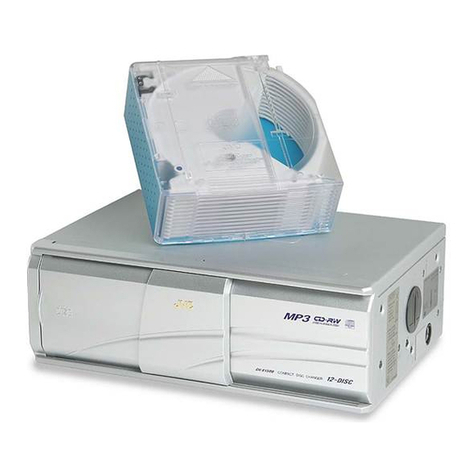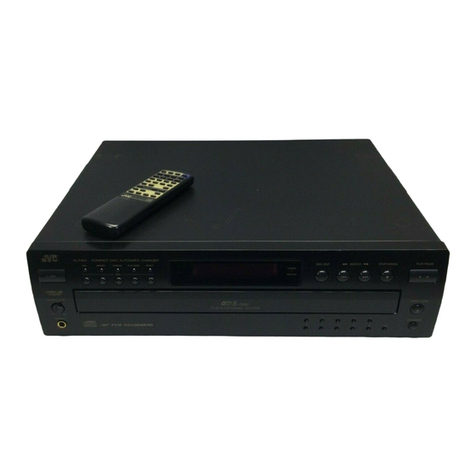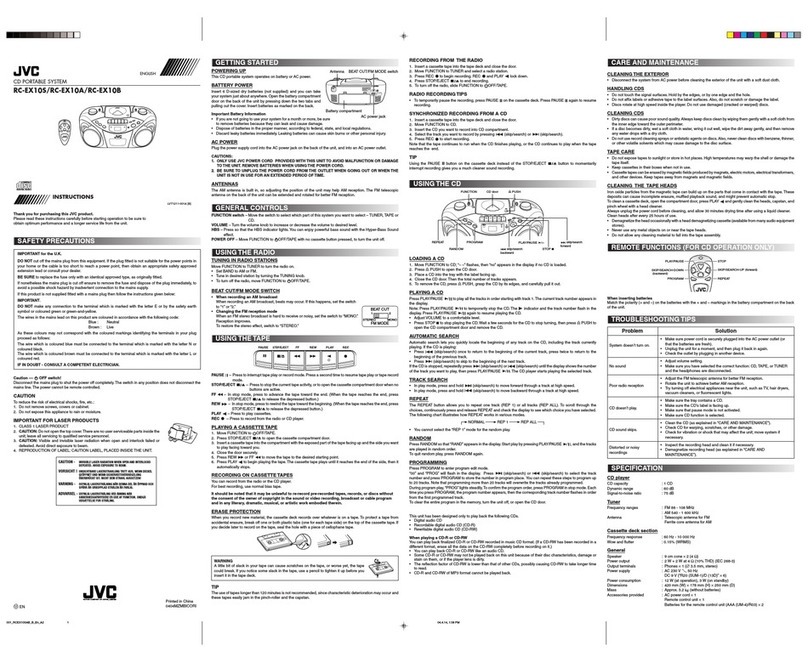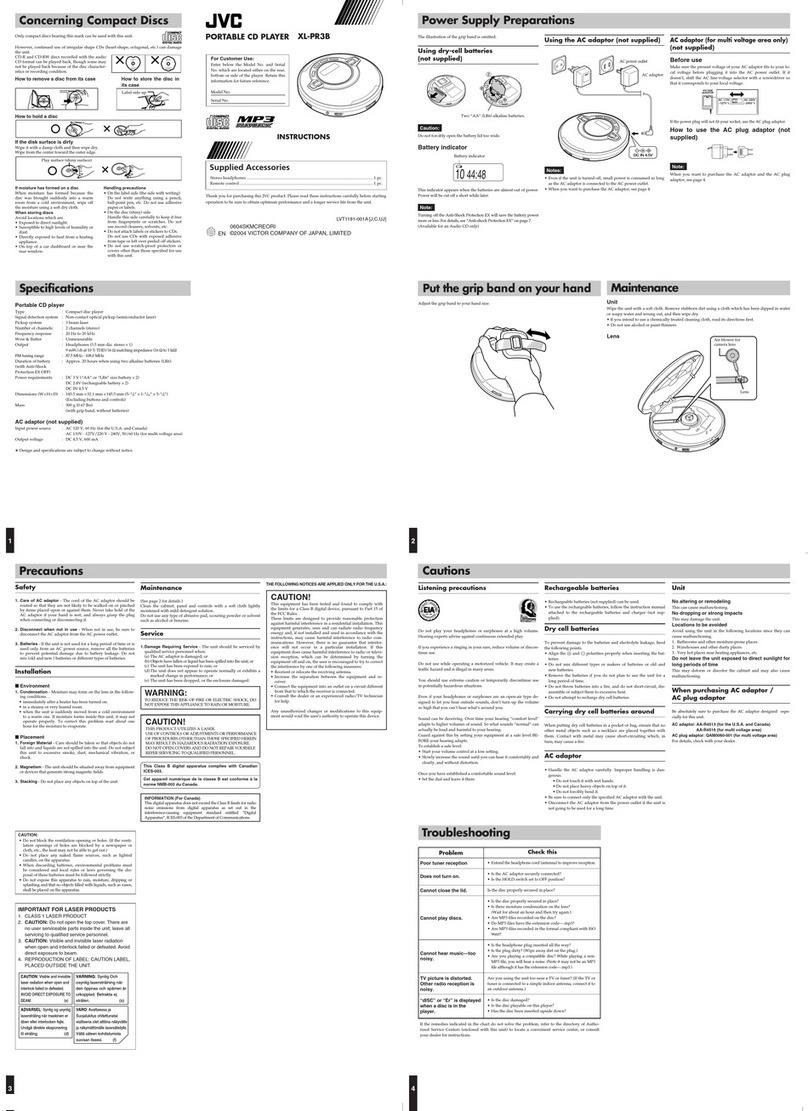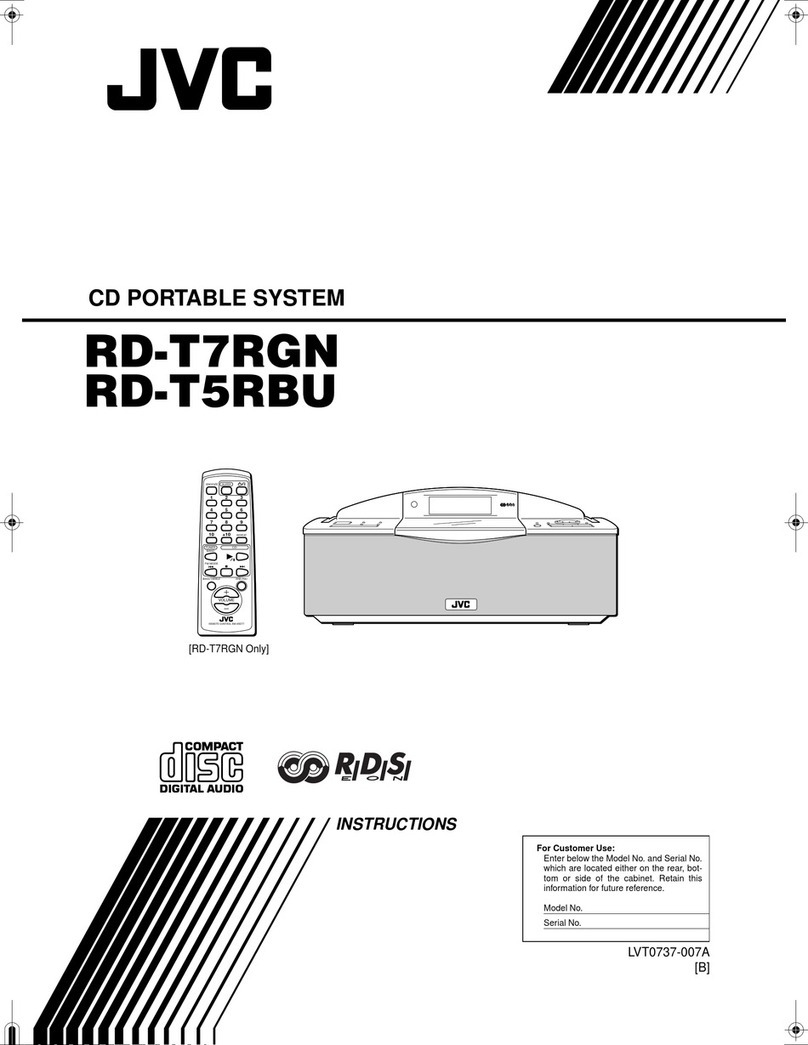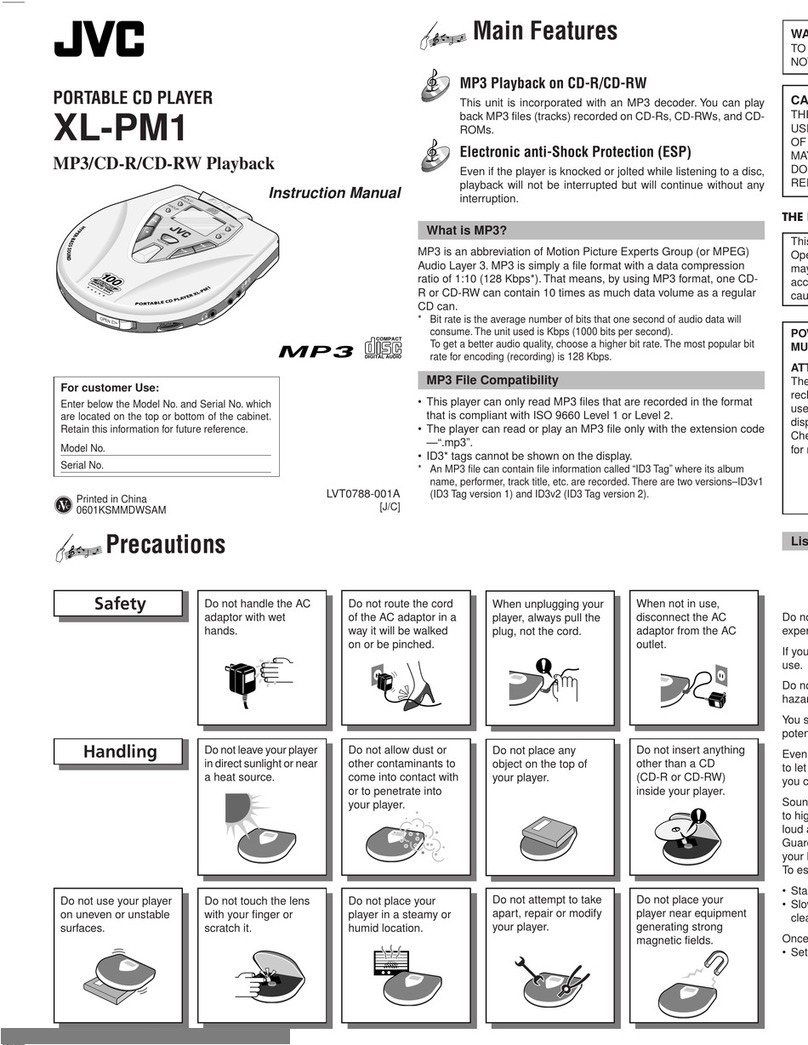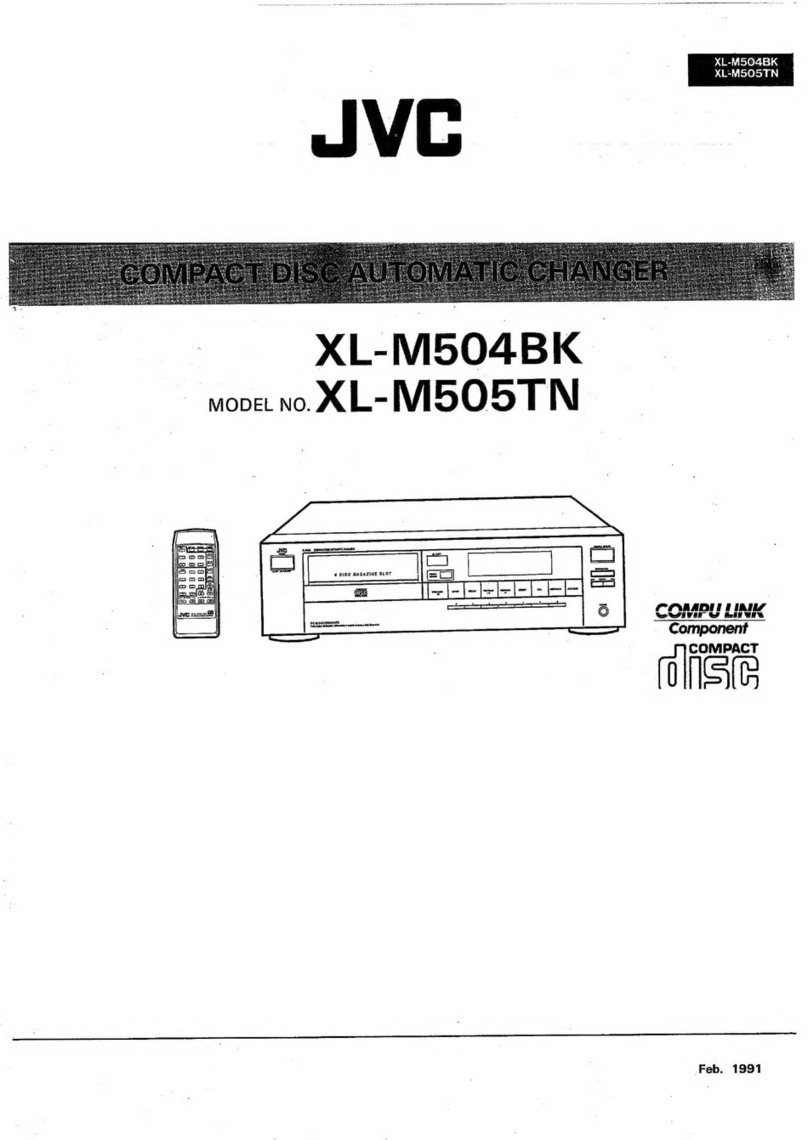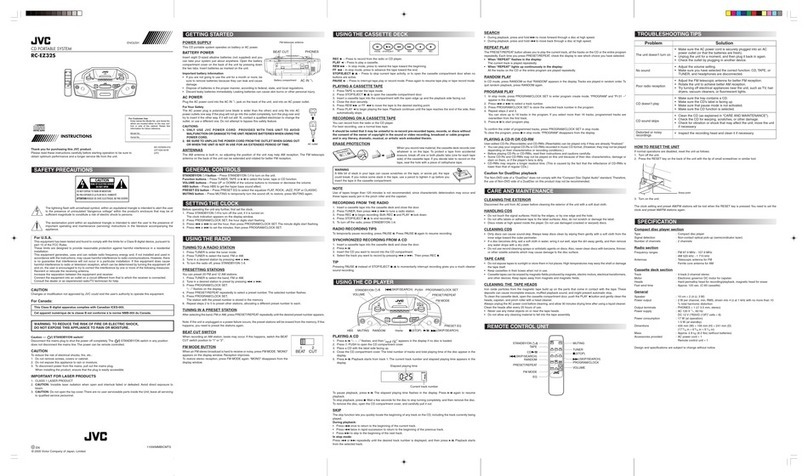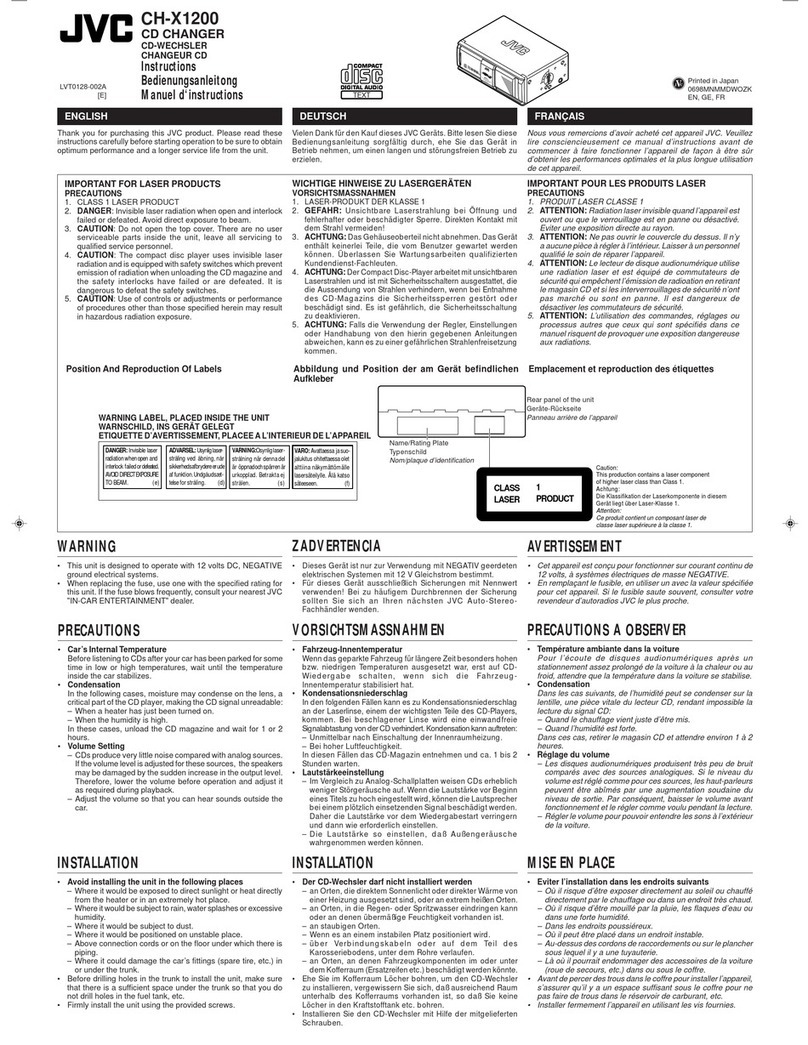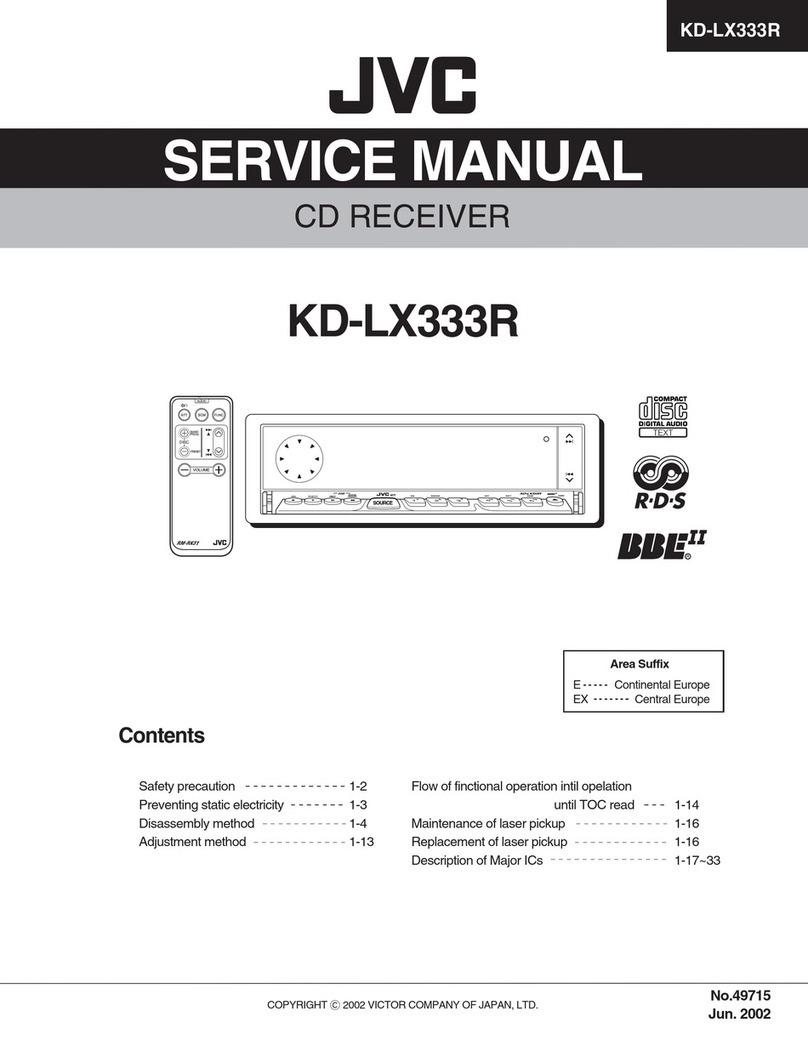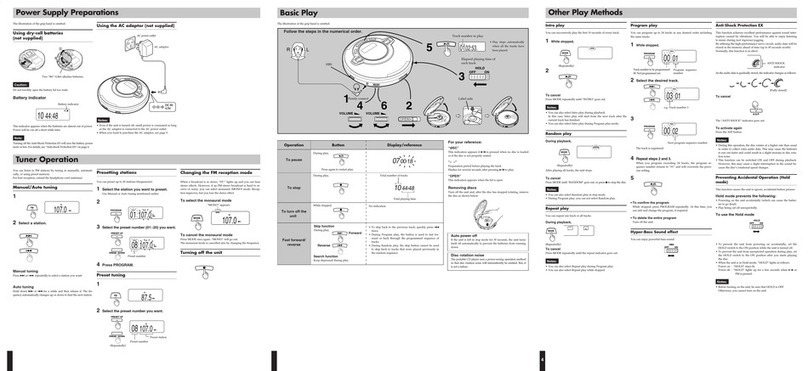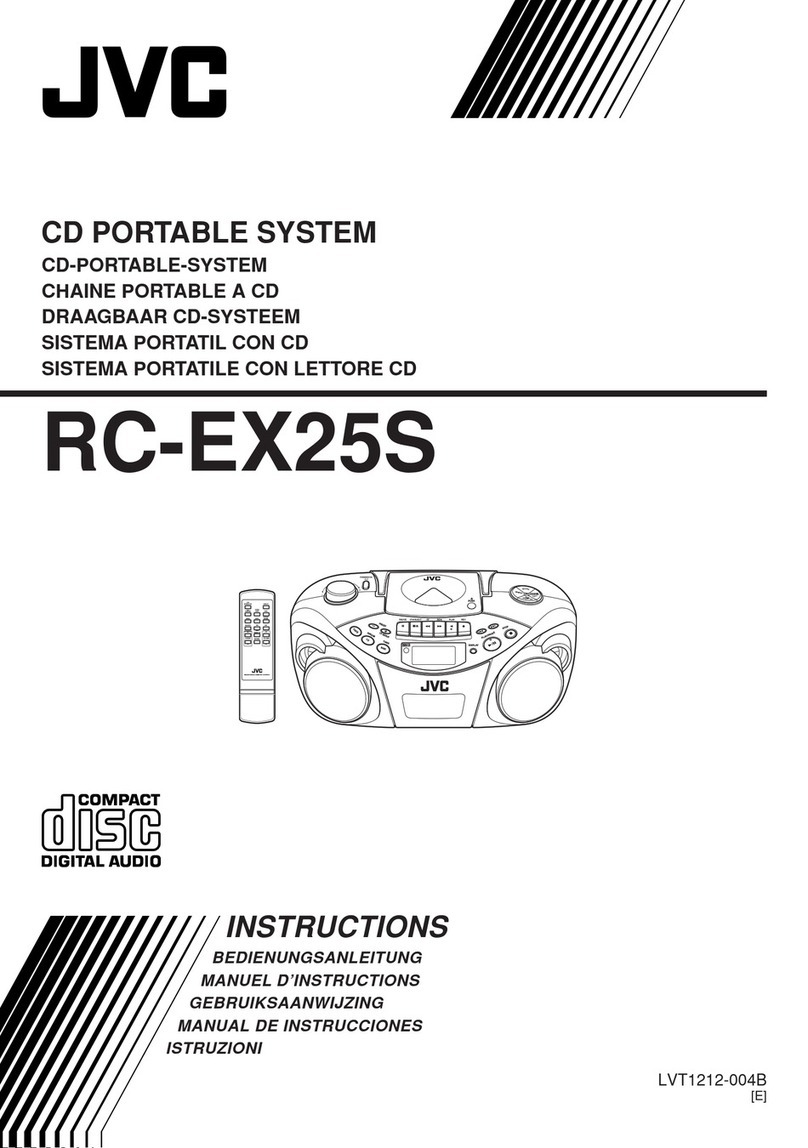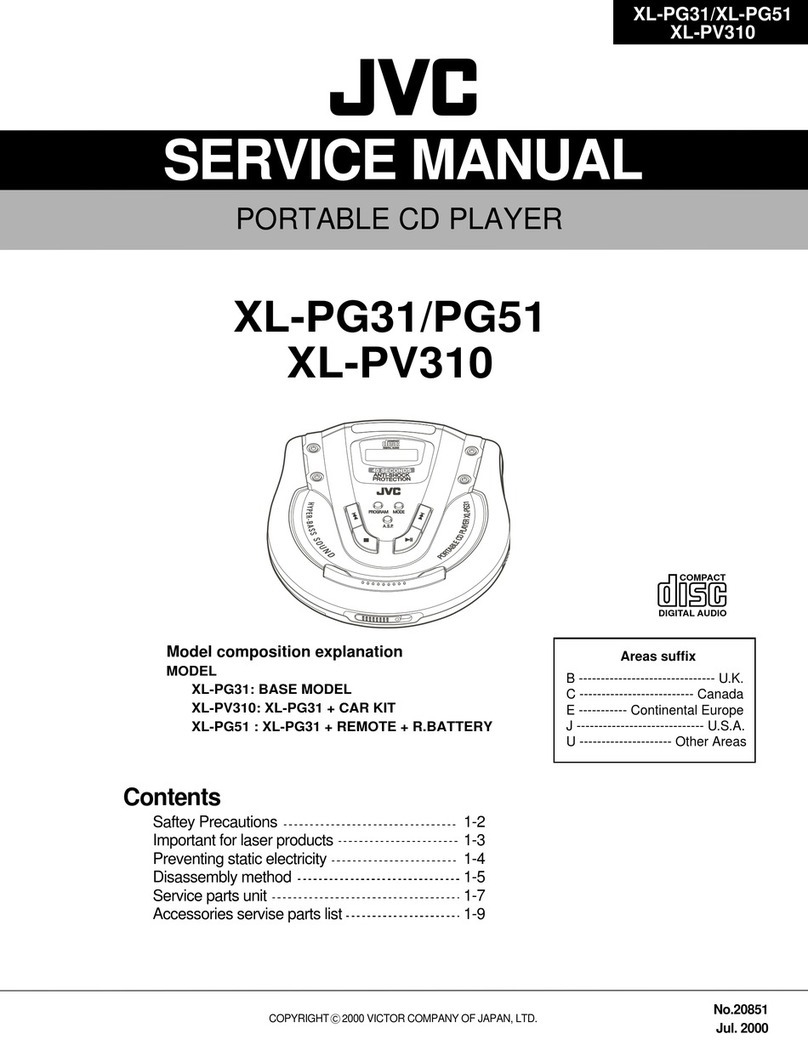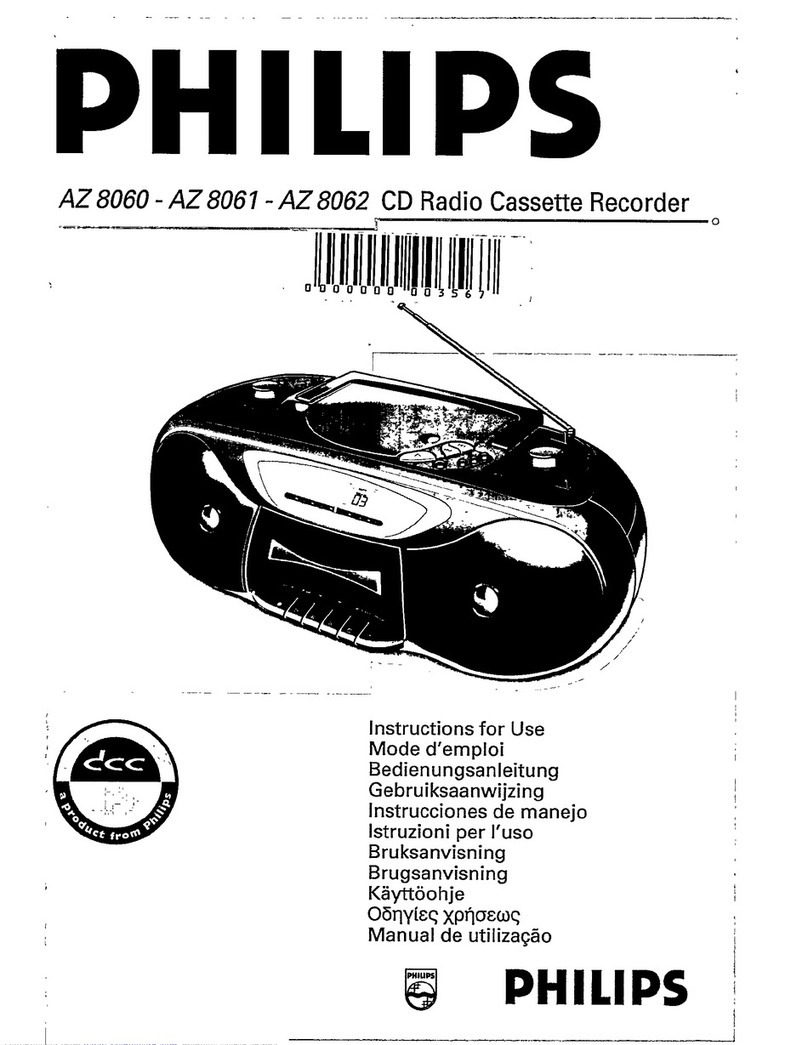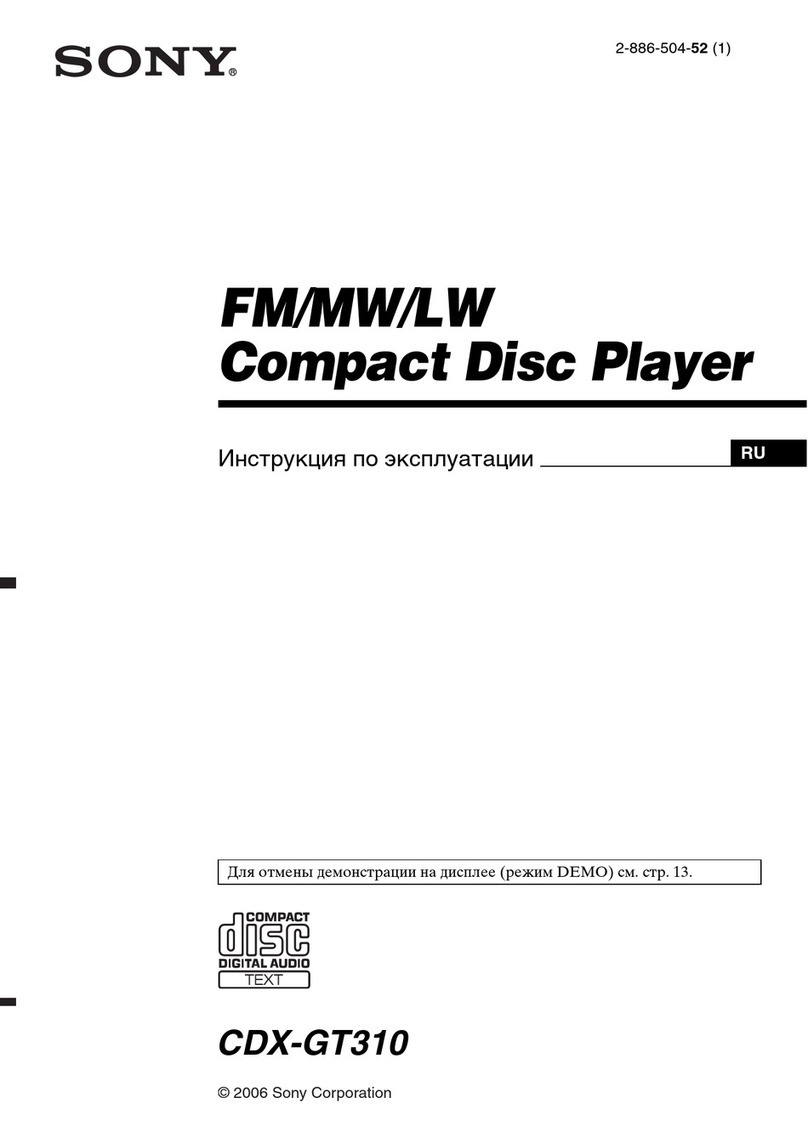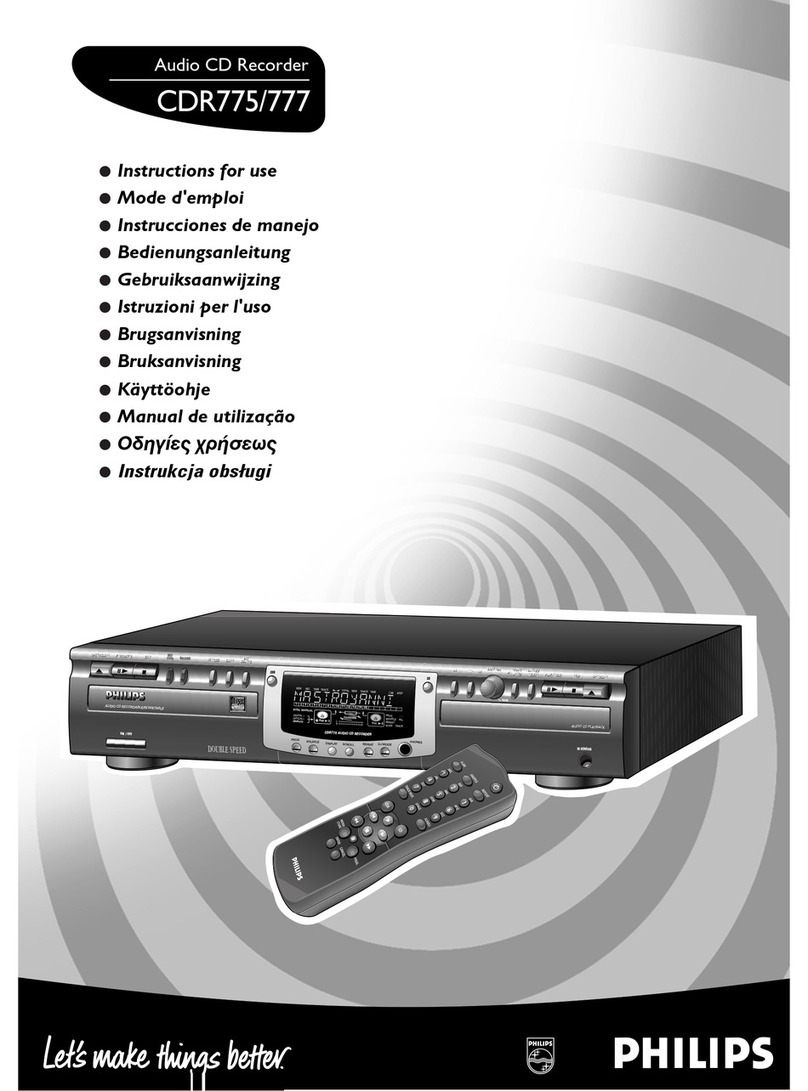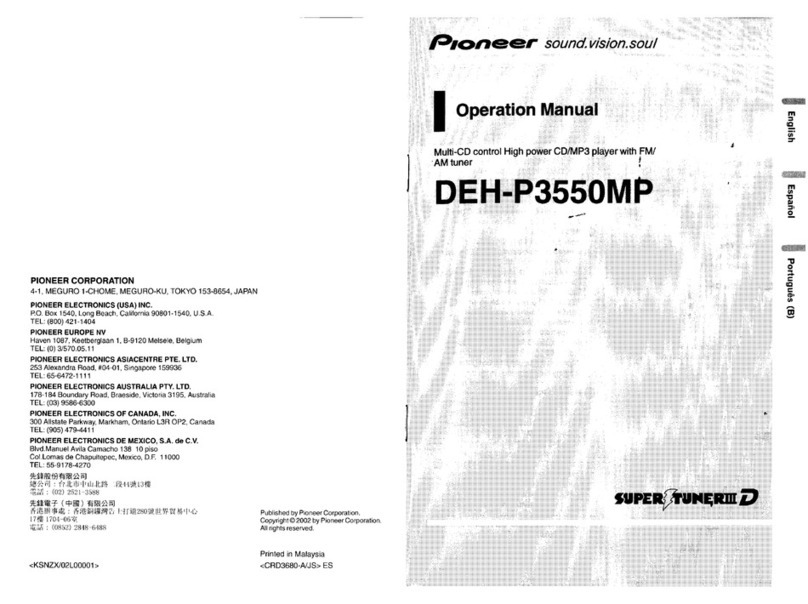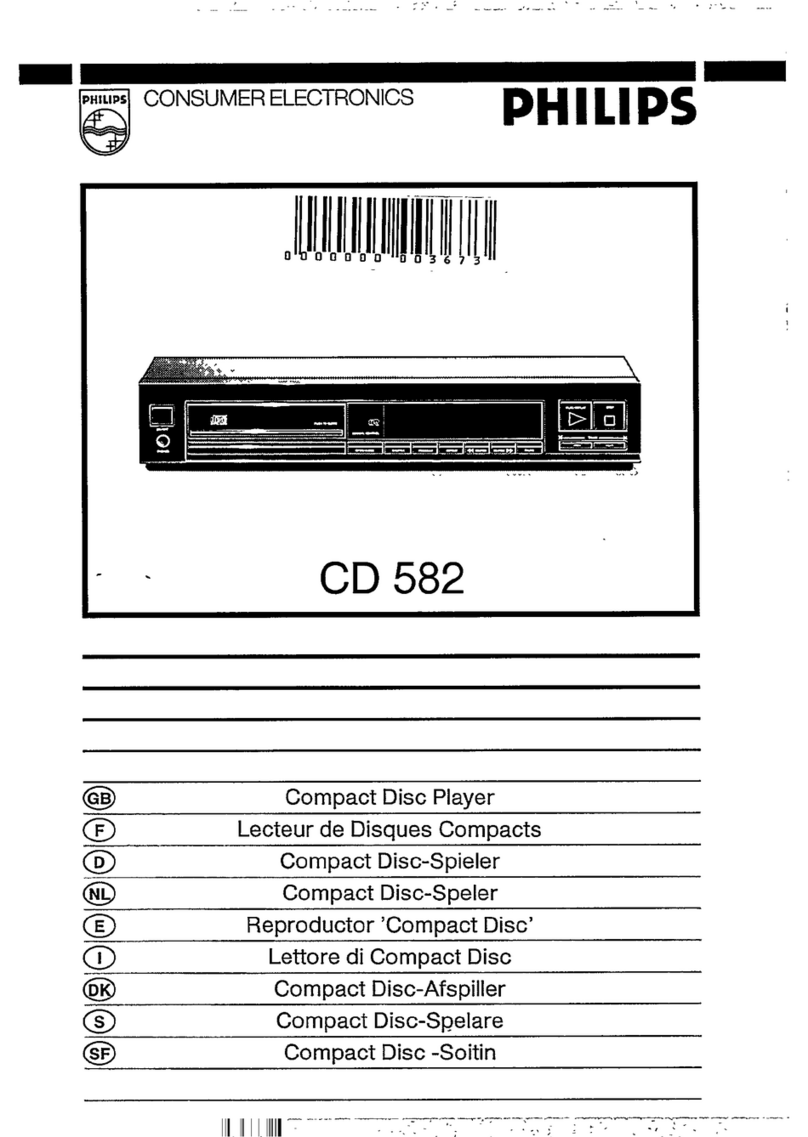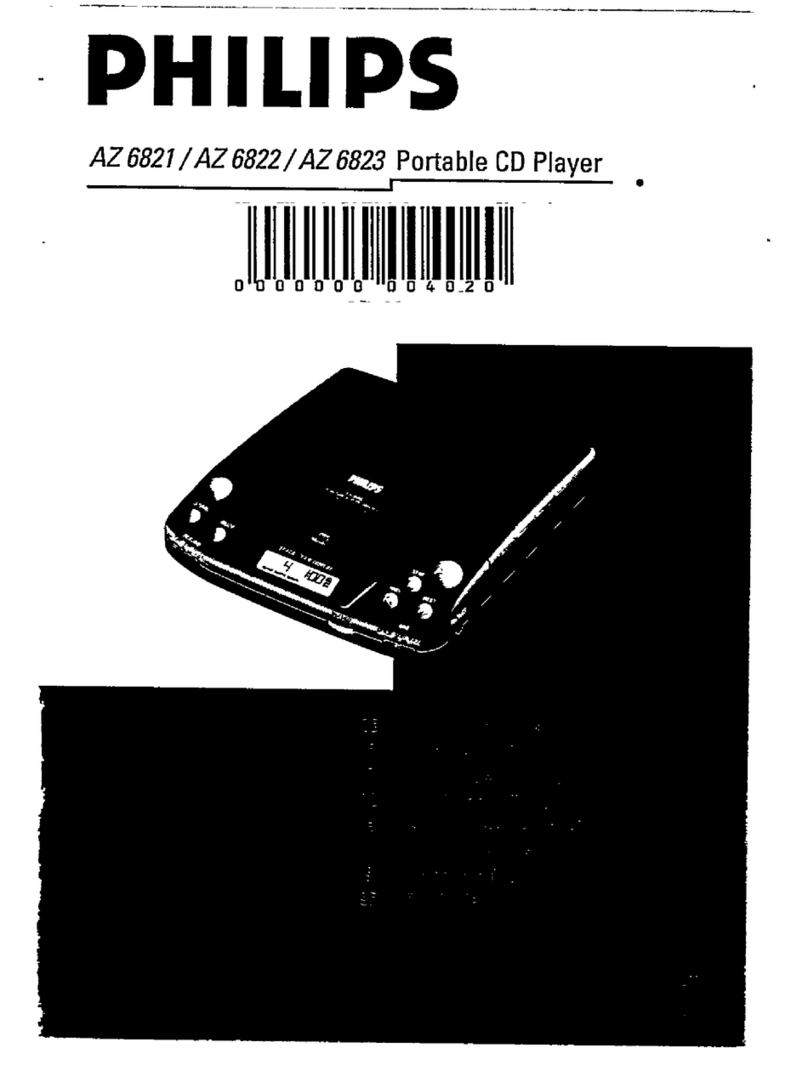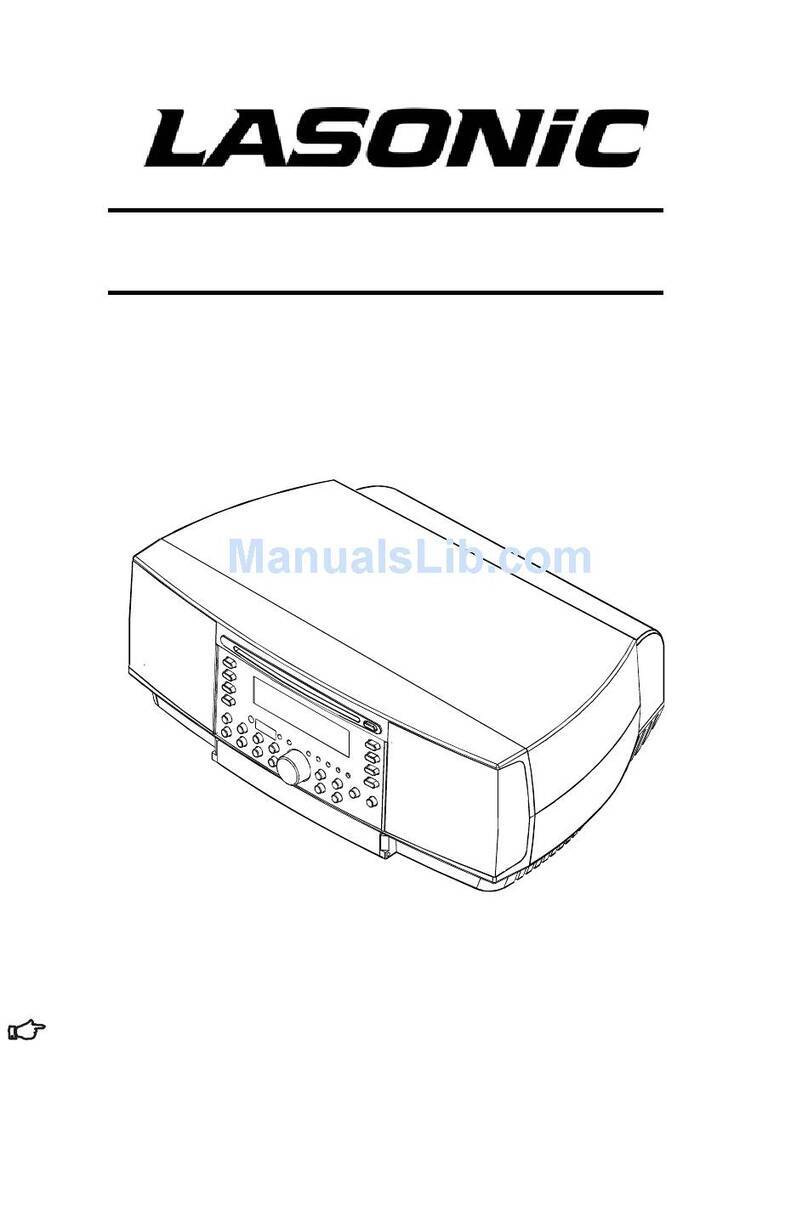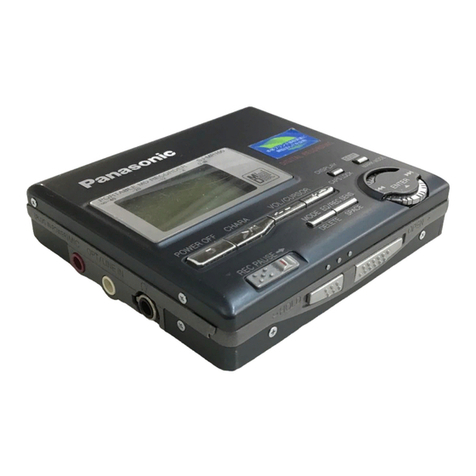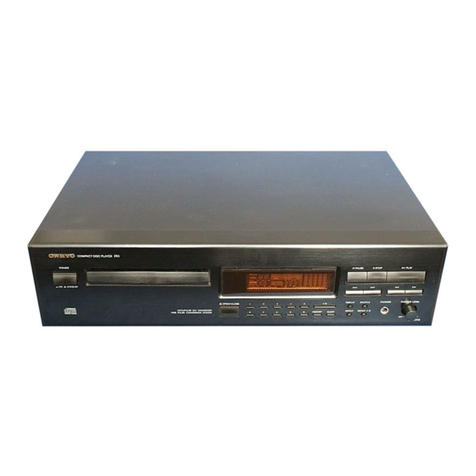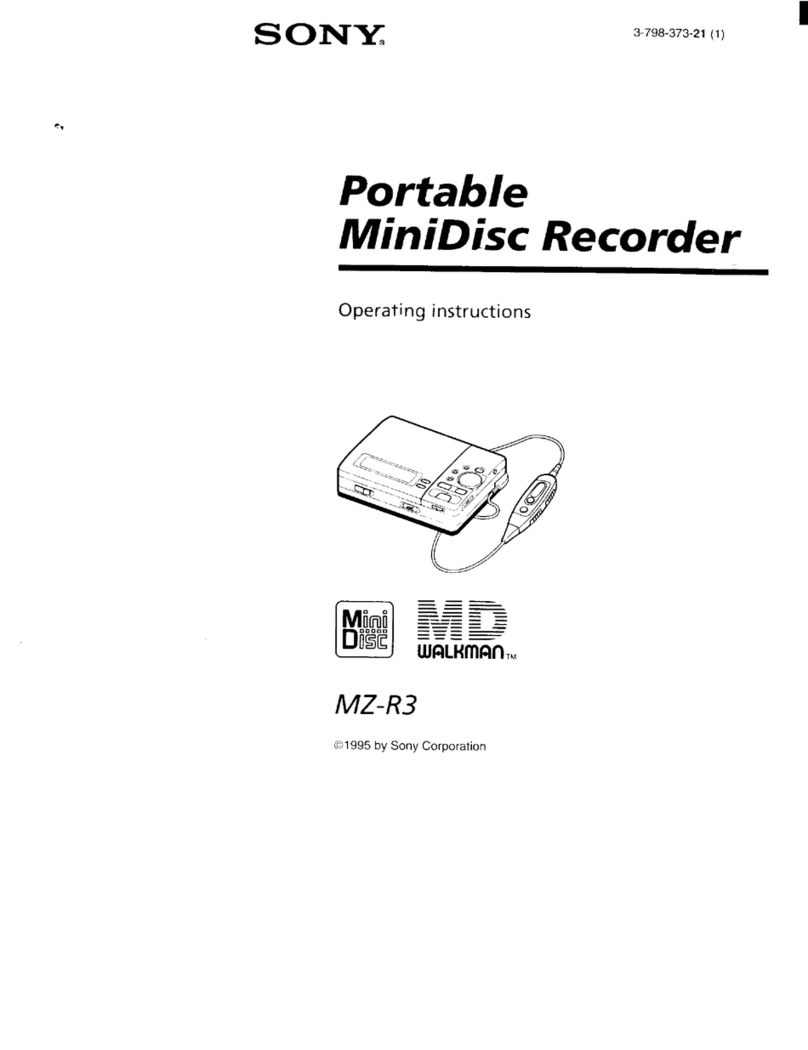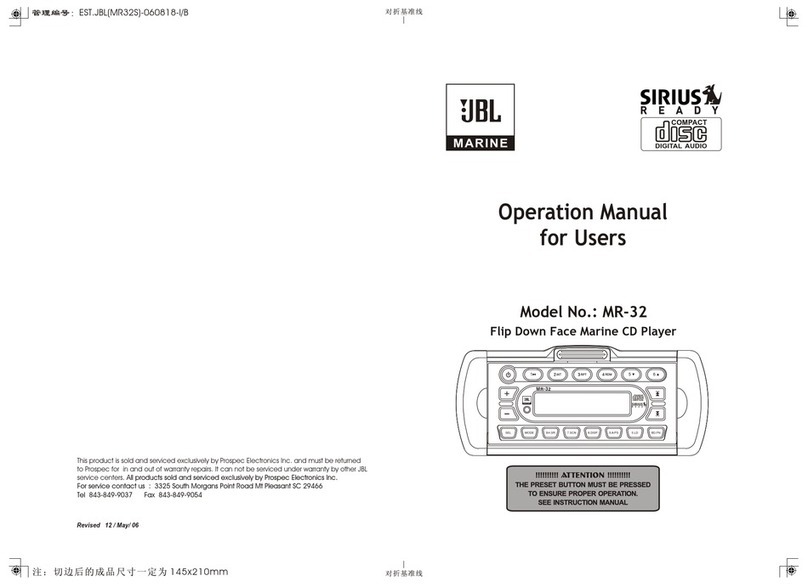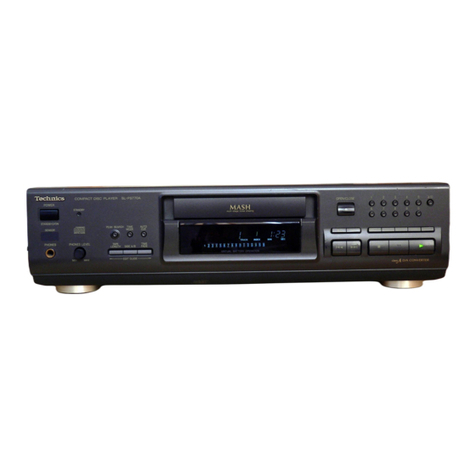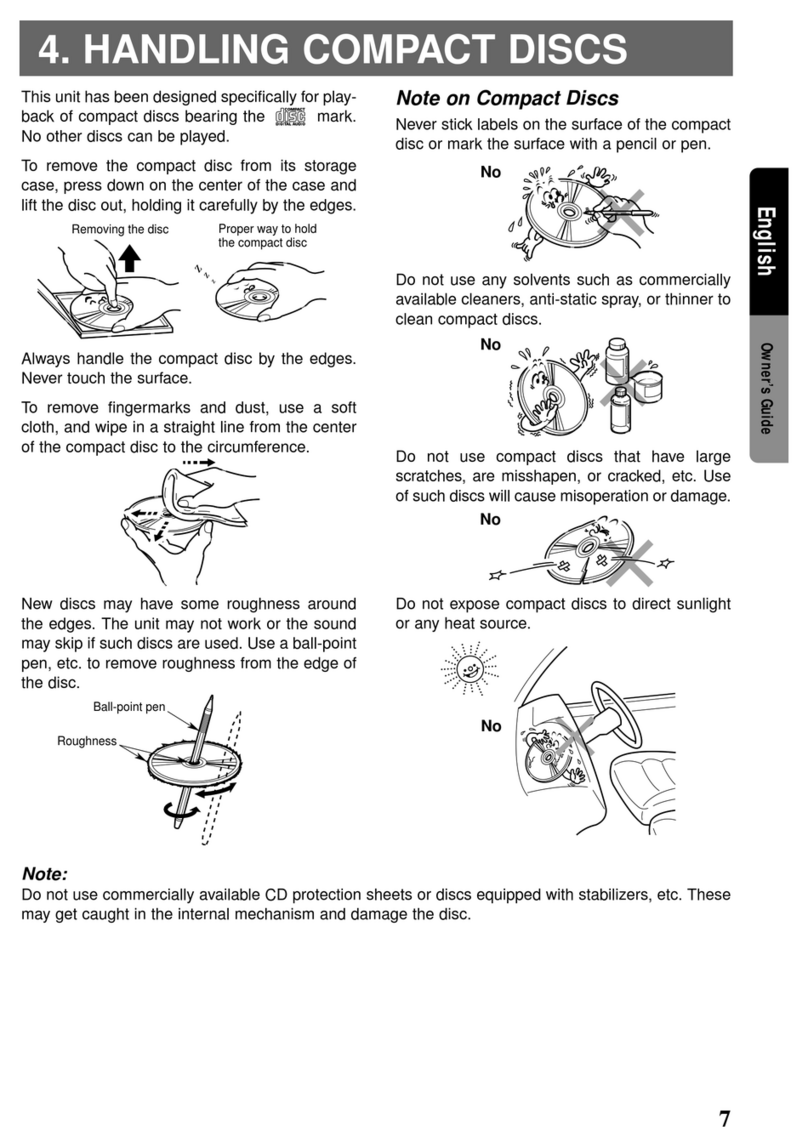XL-SV320SL/SV305GD
XL-SV308BU
1-10
XL-SV320SL/305GD/308BU
ES3207 Pin description
Name Number I/O Definition
VSS 1,2,25,26,29,30,31, I Ground.
72,75,77,91,100
VCC 3,4,5,16,32 I Voltage supply 5V.
66,73,78,90
DSC-C 6 I Clock for programming to access internal registers.
AUX[15:0] 40-38,36-34,20,18, I/O Auxiliary control pins.
14,67-70,11,9,7
DSC-D[7:0] 81,83,85,93, I Data for programming to access internal registers.
95,97,99,8
DSC-S 10 I Strobe for programming to access internal registers.
DCLK/ 12 O Dual-purpose pin. DCLK is the mpeg decoder clock.
EXT-CLK I EXT-CLK is the external clock. EXT-CLK input during bypass PLL mode.
RST# 13 I Video reset (active low).
MUTE 15 O Audio mute.
MCLK 17 I Audio master clock.
TWS/ I Dual-purpose pin. TWS is the transmit audio frame sync.
SPLLOUT 19 O SPLLOUT is the select PLL output.
TSD 21 I Transmit audio data input.
TBCK 22 I Transmit audio bit clock.
RWS/ O Dual purpose pin. RWS is the receive audio frame sync.
SEL-PLL1 23 I Pins SEL-PLL[1:0] select the PLL clock frequency for DCLK output.
SELPLL1 SELPLL0 DCLK
0 0 Bypass PLL (Input Mode)
0 1 27MHz (Output Mode)
1 0 32.4MHz (Output Mode)
1 1 40.5MHz (Output Mode)
RSTOUT# 24 O Reset output (active low).
NC 27,28,65,76 No connect. Do not connect to these pins.
RSD/ 33 O Dual purpose pin. RSD is the receive audio data input.
SEL-PLL0 I SEL-PLL0 is the select PLL. See the table for pin no. 23.
RBCK 37 O Dual purpose pin. RBCK is the receive audio bit clock.
SER-IN I SER-INis serial input DSC mode.
0=ParallelDSCmode.
1=SerialDSC mode.
VSSA 41,50,51,56,57,62,63 I Analog ground.
VREFM 42 I DAC and ADC minimum reference. Bypass to VCMR with 10µF in parallel with 0.1µF.
VREFP 43 I DAC and ADC maximum reference. Bypass to VCMR with 10µF in parallel with 0.1µF.
VCCA 44,45,59,60 I Analog VCC. 5V.
AOR 46 O Right channel output.
AOL 47 O Left channel output.
MIC2 48 I Microphone input 2.
MIC1 49 I Microphone input 1.
VREF 52 I Internal resistor divider generates Common Mode Reference (CMR) voltage. Bypass to
analog ground with 0.1µF.
VCM 53 I ADC Common Mode Reference (CMR) buffer output. CMR is approximately 2.25V.
Bypass to analog ground with 47µF electrolytic in parallel with 0.1µF.
RSET 54 I Full scale DAC current adjustment.
COMP 55 I Compensationpin.
CDAC 58 O Modulated chrominance output.
YDAC 61 O Y luminance data bus for screen video port.
VDAC 64 O Composite video output.
XOUT 71 O Crystal output.
XIN 74 I 27MHz crystal input.
PCLK 79 I/O 13.5MHz pixel clock.
PCLK2X 80 I/O 27MHz (2 times pixel clock).
HSYNC# 82 I/O Horizontal sync (active low).
VSYNC# 84 I/O Vertical sync (active low).
YUV[7:0] 86-89,92,94,96,98 O YUV luminance and chrominance data bus for screen video port.
